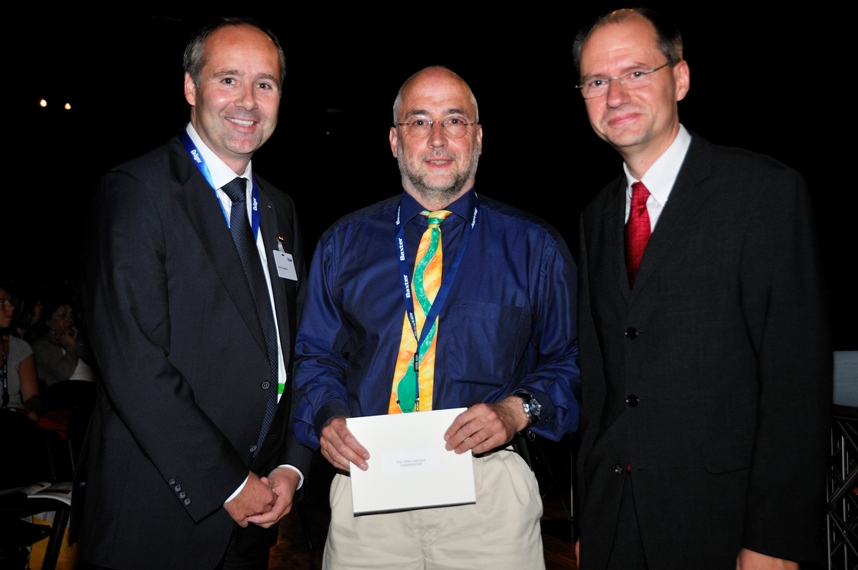
At this year's Congress of the European Society of Anaesthesiology (ESA), Euroanaesthesia 2010, in Helsinki, the ESA awarded the “Dräger Award for Intensive Care Medicine” for the last four years in a row. The award went to the Pulmonary Engineering Group around Professor Marcelo Gama de Abreu1, Head of Clinical and Laboratory Research, Department of Anaesthesiology and Intensive Care Therapy at the University Hospital Carl Gustav Carus, Dresden, for their laboratory research work entitled “Variable tidal volumes improve lung protective ventilation strategies in experimental lung injury”.2 The 10,000 Euro endowment was donated by Dräger, an international leader in the fields of medical and safety technology.

During the opening ceremony, Professor Benedikt Pannen, Chairperson of the ESA Scientific Programme Committee, together with Oliver Rosenthal, Head of Dräger Strategic Business Field Anesthesiology, presented the award to Professor Marcelo Gama de Abreu, representing his working group. “With the “Dräger Award for Intensive Care Medicine“, Dräger honors scientific endeavors and supports advances in the field of critical care medicine”, explained Rosenthal. The annual prize awards significant European research in the field of intensive care medicine and is given to an anesthetic or intensive care department rather than to any one research worker.
This year, the Dräger Prize subcommittee of the ESA awarded the prize to a working group that conducted the first laboratory research work showing that it is possible to improve protective mechanical ventilation beyond the current standard proposed by the ARDS Network (Acute Respiratory Distress Syndrome) and also improve a mechanical ventilation commonly known as “open lung approach”. “We found that in acute lung injury, variable ventilation in combination with different protective ventilation strategies improves respiratory function and reduces ventilator associated lung injury”, explains Professor Marcelo Gama de Abreu. The group conducted the first study showing that variable ventilation (breath-by-breath variation of tidal volumes) is able to attenuate lung histological damage and demonstrated that it does not increase gene expression or release of pro-inflammatory markers of lung injury.
As Chairman of the Dräger Prize Subcommittee, Dr. César Aldecoa Alvares Santullano, Department of Anaesthesiology and Intensive Care, Hospital Universitario Rio Hortega, Valladolid, Spain, stated that this paper was selected as it is an outstanding high-quality scientific study on the treatment of acute lung injury with results that play a leading role in influencing future clinical practice beyond current standards.

